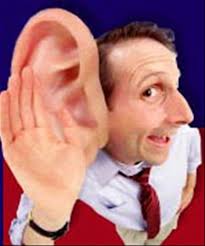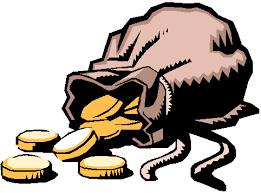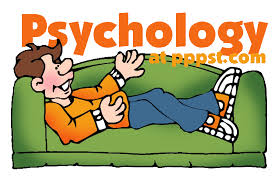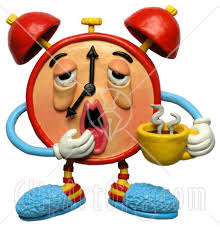Symptoms of schizophreniaPatients with a
possible diagnosis of schizophrenia are evaluated on the basis of a set
or constellation of symptoms; there is no single symptom that is unique
to schizophrenia. In 1959, the German psychiatrist Kurt Schneider
proposed a list of so-called first-rank symptoms, which he regarded as
diagnostic of the disorder.
These symptoms include:
Somatic
hallucinations refer to sensations or perceptions concerning body
organs that have no known medical cause or reason, such as the notion
that one's brain is radioactive. Thought insertion and/or withdrawal
refer to delusions that an outside force (for example, the FBI, the
CIA, Martians, etc.) has the power to put thoughts into one's mind or
remove them.
POSITIVE SYMPTOMS. The positive
symptoms of schizophrenia are those that represent an excessive or
distorted version of normal functions. Positive symptoms include
Schneider's first-rank symptoms as well as disorganized thought
processes (reflected mainly in speech) and disorganized or catatonic
behavior. Disorganized thought processes are marked by such
characteristics as looseness of associations, in which the patient
rambles from topic to topic in a disconnected way; tangentially, which
means that the patient gives unrelated answers to questions; and "word
salad," in which the patient's speech is so incoherent that it makes no
grammatical or linguistic sense. Disorganized behavior means that the
patient has difficulty with any type of purposeful or goal-oriented
behavior, including personal self-care or preparing meals. Other forms
of disorganized behavior may include dressing in odd or inappropriate
ways, sexual self-stimulation in public, or agitated shouting or
cursing.
NEGATIVE SYMPTOMS. Schizophrenia
includes three so-called negative symptoms. They are called negative
because they represent the lack or absence of behaviors. The negative
symptoms that are considered diagnostic of schizophrenia are a lack of
emotional response (affective flattening), poverty of speech, and
absence of volition or will. In general, the negative symptoms are more
difficult for doctors to evaluate than the positive symptoms.
DiagnosisA
doctor must make a diagnosis of schizophrenia on the basis of a
standardized list of outwardly observable symptoms, not on the basis of
internal psychological processes. There are no specific laboratory
tests that can be used to diagnose schizophrenia. Researchers have,
however, discovered that patients with schizophrenia have certain
abnormalities in the structure and functioning of the brain compared to
normal test subjects. These discoveries have been made with the help of
imaging techniques such as
computed tomography scans (CT scans).
When
a psychiatrist assesses a patient for schizophrenia, he or she will
begin by excluding physical conditions that can cause abnormal thinking
and some other behaviors associated with schizophrenia. These
conditions include organic brain disorders (including traumatic
injuries of the brain), temporal lobe epilepsy, Wilson's disease, prion
diseases, Huntington's chorea, and
encephalitis. The doctor will also need to rule out
heavy metal poisoning and substance abuse disorders, especially amphetamine use.
After
ruling out organic disorders, the clinician will consider other
psychiatric conditions that may include psychotic symptoms or symptoms
resembling psychosis. These disorders include mood disorders with
psychotic features; delusional disorder; dissociative disorder not
otherwise specified (DDNOS) or
multiple personality disorder; schizotypal, schizoid, or paranoid
personality disorders;
and atypical reactive disorders. In the past, many individuals were
incorrectly diagnosed as schizophrenic. Some patients who were
diagnosed prior to the changes in categorization should have their
diagnoses, and treatment, reevaluated. In children, the doctor must
distinguish between psychotic symptoms and a vivid fantasy life, and
also identify learning problems or disorders. After other conditions
have been ruled out, the patient must meet a set of criteria specified:
TreatmentThe
treatment of schizophrenia depends in part on the patient's stage or
phase. Psychotic symptoms and behaviors are considered psychiatric
emergencies, and persons showing signs of psychosis are frequently
taken by family, friends, or the police to a hospital emergency room. A
person diagnosed as psychotic can be legally hospitalized against his
or her will, particularly if he or she is violent, threatening to
commit
suicide,
or threatening to harm another person. A psychotic person may also be
hospitalized if he or she has become malnourished or ill as a result of
failure to feed, dress appropriately for the climate, or otherwise take
care of him- or herself.
A patient having a first psychotic episode should be given a CT or MRI (
magnetic resonance imaging) scan to rule out structural brain disease.
Antipsychotic medicationsThe primary form of treatment of schizophrenia is antipsychotic medication.
Antipsychotic drugshelp to control almost all the positive symptoms of the disorder. They
have minimal effects on disorganized behavior and negative symptoms.
Between 60-70% of schizophrenics will respond to antipsychotics. In the
acute phase of the illness, patients are usually given medications by
mouth or by intramuscular injection. After the patient has been
stabilized, the antipsychotic drug may be given in a long-acting form
called a depot dose. Depot medications last for two to four weeks; they
have the advantage of protecting the patient against the consequences
of forgetting or skipping daily doses. In addition, some patients who
do not respond to oral neuroleptics have better results with depot
form. Patients whose long-term treatment includes depot medications are
introduced to the depot form gradually during their stabilization
period. Most people with schizophrenia are kept indefinitely on
antipsychotic medications during the maintenance phase of their
disorder to minimize the possibility of relapse.
As
of the early 2000s, the most frequently used antipsychotics fall into
two classes: the older dopamine receptor antagonists, or DAs, and the
newer serotonin dopamine antagonists, or SDAs. (Antagonists block the
action of some other substance; for example, dopamine antagonists
counteract the action of dopamine.) The exact mechanisms of action of
these medications are not known, but it is thought that they lower the
patient's sensitivity to sensory stimuli and so indirectly improve the
patient's ability to interact with others.
DOPAMINE
RECEPTOR ANTAGONIST. The dopamine antagonists include the older
antipsychotic (also called neuroleptic) drugs, such as haloperidol
(Haldol), chlorpromazine (Thorazine), and fluphenazine (Prolixin).
These drugs have two major drawbacks: it is often difficult to find the
best dosage level for the individual patient, and a dosage level high
enough to control psychotic symptoms frequently produces extrapyramidal
side effects, or EPS. EPSs include parkinsonism, in which the patient
cannot walk normally and usually develops a tremor; dystonia, or
painful muscle spasms of the head, tongue, or neck; and akathisia, or
restlessness. A type of long-term EPS is called
tardive dyskinesia, which features slow, rhythmic, automatic movements. Schizophrenics with
AIDS are especially vulnerable to developing EPS.
SEROTONIN
DOPANINE ANTAGONISTS. The serotonin dopamine antagonists, also called
atypical antipsychotics, are newer medications that include clozapine
(Clozaril), risperidone (Risperdal), and olanzapine (Zyprexa). The SDAs
have a better effect on the negative symptoms of schizophrenia than do
the older drugs and are less likely to produce EPS than the older
compounds. The newer drugs are significantly more expensive in the
short term, although the SDAs may reduce long-term costs by reducing
the need for hospitalization. They are also presently unavailable in
injectable forms. The SDAs are commonly used to treat patients who
respond poorly to the DAs. However, many psychotherapists now regard
the use of these atypical antipsychotics as the treatment of first
choice; in particular, clozapine appears to be more effective than
other antipsychotics in controlling persistent aggression in some
patients.
NEWER DRUGS. Some newer
antipsychotic drugs have been approved by the Food and Drug
administration (FDA) in the early 2000s. These drugs are sometimes
called second-generation antipsychotics or SGAs. Aripiprazole
(Abilify), which is classified as a partial dopaminergic agonist,
received FDA approval in August 2003. Two drugs that are still under
investigation, a neurokinin antagonist and a serotonin 2A/2C antagonist
respectively, show promise in the treatment of schizophrenia and
schizoaffective disorder.
PsychotherapyMost
schizophrenics can benefit from psychotherapy once their acute symptoms
have been brought under control by antipsychotic medication.
Psychoanalytic approaches are not recommended. Behavior therapy,
however, is often helpful in assisting patients to acquire skills for
daily living and social interaction. It can be combined with
occupational therapy to prepare the patient for eventual employment.
Family therapyFamily therapyis often recommended for the families of schizophrenic patients, to
relieve the feelings of guilt that they often have as well as to help
them understand the patient's disorder. The family's attitude and
behaviors toward the patient are key factors in minimizing relapses
(for example, by reducing stress in the patient's life), and family
therapy can often strengthen the family's ability to cope with the
stresses caused by the schizophrenic's illness. Family therapy focused
on communication skills and problem-solving strategies is particularly
helpful. In addition to formal treatment, many families benefit from
support groups and similar mutual help organizations for relatives of
schizophrenics.
PrognosisOne
important prognostic sign is the patient's age at onset of psychotic
symptoms. Patients with early onset of schizophrenia are more often
male, have a lower level of functioning prior to onset, a higher rate
of brain abnormalities, more noticeable negative symptoms, and worse
outcomes. Patients with later onset are more likely to be female, with
fewer brain abnormalities and thought impairment, and more hopeful
prognoses.
The average course and outcome for
schizophrenics are less favorable than those for most other mental
disorders, although as many as 30% of patients diagnosed with
schizophrenia recover completely and the majority experience some
improvement. Two factors that influence outcomes are stressful life
events and a hostile or emotionally intense family environment.
Schizophrenics with a high number of stressful changes in their lives,
or who have frequent contacts with critical or emotionally
over-involved family members, are more likely to relapse. Overall, the
most important component of long-term care of schizophrenic patients is
complying with their regimen of antipsychotic medications.















































